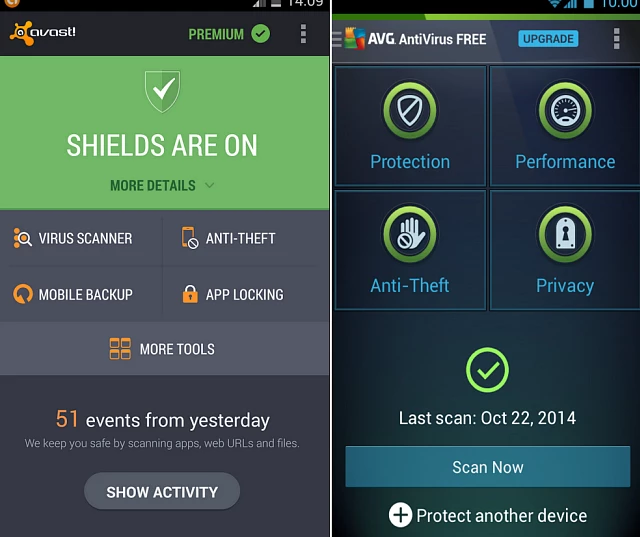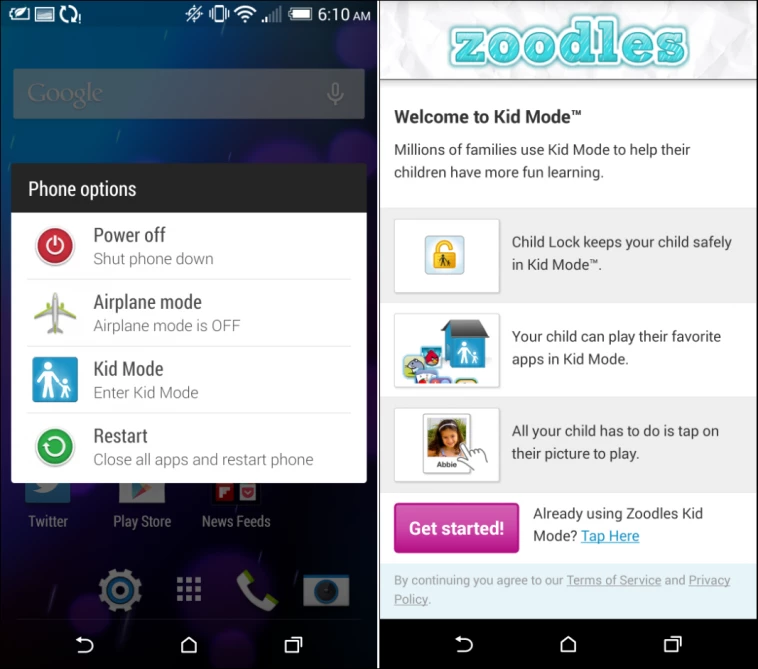Your smartphone is more than a communication and entertainment device in your pocket. It's a powerful computer with tons of your personal and private data stored within, just like your home or work computer. Here are some essential tips that will help keep your smartphone and the data on it protected.
Set up a lock screen
This might seem like a "duh" tip, but it surprises me how many people I meet who don't have a lock screen enabled. Your password is the first line of defense in keeping your data secure, and is the easiest security feature to set up. Of course it's also worth noting that newer phones on the market like the iPhone 6 and Samsung Galaxy S5 have a fingerprint sensor for locking your phone.

No matter which phone you have, when using a PIN or password, don't use obvious things like "1234", "1111", or any easily guessable combination. Something more complex can hold off a would-be thief long enough for you to locate and remote wipe your device via the Android Device Manager, Find My iPhone service or Windows Phone sites, which leads us straight to the next tip.
Set up locate and remote wipe
All of the three major mobile operating systems have a mechanism for finding your phone that you can access from your computer. Such services have become a lot more accurate over the years, and are useful when misplacing your phone around the house or office. But these services have more powerful features too, which is important for something serious like having your phone stolen. In that case you can lock the thief out of the phone, and can even go as far as remotely wiping it clean.

To make sure the feature is turned on on iPhone, go to iCloud Settings and make sure "Find my iPhone" is turned on. On Windows Phone the feature is built-in and should be enabled by default. For Android users, it's called "Android Device Manager" and you can enable it by going to Settings > Security > Device Administrators and turn it on from there.

Use a secure password manager
Don't let your mobile browser save your passwords, because if someone were to get into your phone, it wouldn't take a long for them to gain access to your email, Amazon account, and a lot more. The first time you use the browser on your smartphone it will ask to save passwords, just tap no. If you already have your browser set to remember them, you can turn it off in the browser settings.

Instead, I recommend using a trusted third-party utility like LastPass or 1Password to beef up your password security. These services will create complex passwords and remember them for you. All you then need to remember is one master password (or use a fingerprint sensor if your device has one) to open your encrypted password vault and automatically fill them in for each as you need them.

Don't allow apps from unknown sources
While the iOS and Windows Phone are locked down to only let you use the respective platform's app store, there are third-party Android stores out there where malware dangers can lurk. Unless you know what you're doing and need to sideload an app or root your device, keep the "Unknown Sources" setting disabled in Android. This will ensure the only apps installed will be through the Google Play Store.

Use a security app
We're hearing a lot more about malware on Android devices lately, and even trusted apps demonstrating malicious behavior can sneak into the Google Play Store, as was the case recently with Uber. While the malware threat may not be as great as, say, with Windows, you never know what type of nefarious code might be around the corner, so it's a good idea to have a line of defense.

Many security apps are free for basic functions, then in-app purchases are required for advanced features. Avast Free Mobile Security or Lookout are both solid choices for Android.
Secure wireless protocols
Besides Wi-Fi, there are other wireless protocols on our phones that make connecting to devices and transferring data easy, like Bluetooth and NFC. But these also open a door for the bad guys to gain access to your device, so you should either switch these features off or put your device into "not discoverable" mode whenever you don't need it.

Not only does this protect your device, it also helps reduce power consumption. Also, never accept requests from unknown devices. If you need to connect to a public Wi-Fi hotspot, make sure to use a VPN service like Hotspot Shield. For more on using a VPN and staying private on Wi-Fi, read our article on how to stay secure on public Wi-Fi.
Set up kid mode
If you hand your phone off to your child to play a game, you don't want the little treasure to rack up your credit card with in-app purchases, or destroy your emails and other data. Kid mode creates a sandboxed section on your phone with only the apps you choose accessible for the little ones.

Simply put, they can only use apps you approve, and they can't access anything else on the phone. Some phones have this option built-in, but if yours doesn't, there are apps that will do the same thing, such as Zoodles for iOS and Android.
Keep data backed up
With all of the data you have on your phone, you'll definitely want to make sure you have a strong backup plan. No matter which platform you're using, each one has its own cloud storage service, such as iCloud for iOS, Google Drive for Android, or OneDrive for Windows Phone.
Even if you use a third-party service, make sure to have important photos and documents set to back up automatically. If you were to lose or break your phone, you'll have peace of mind knowing there's a backup. For more cloud storage tips, check out our look at securing your data in the cloud.
Summing Up
Smartphones are the go-to device for everything from shopping to entertainment and business for many people. As this trend continues, smartphones will increasingly become a target for cybercriminals, no matter which mobile operating system you're running. Following the steps above will allow you to keep it secure against such threats.




